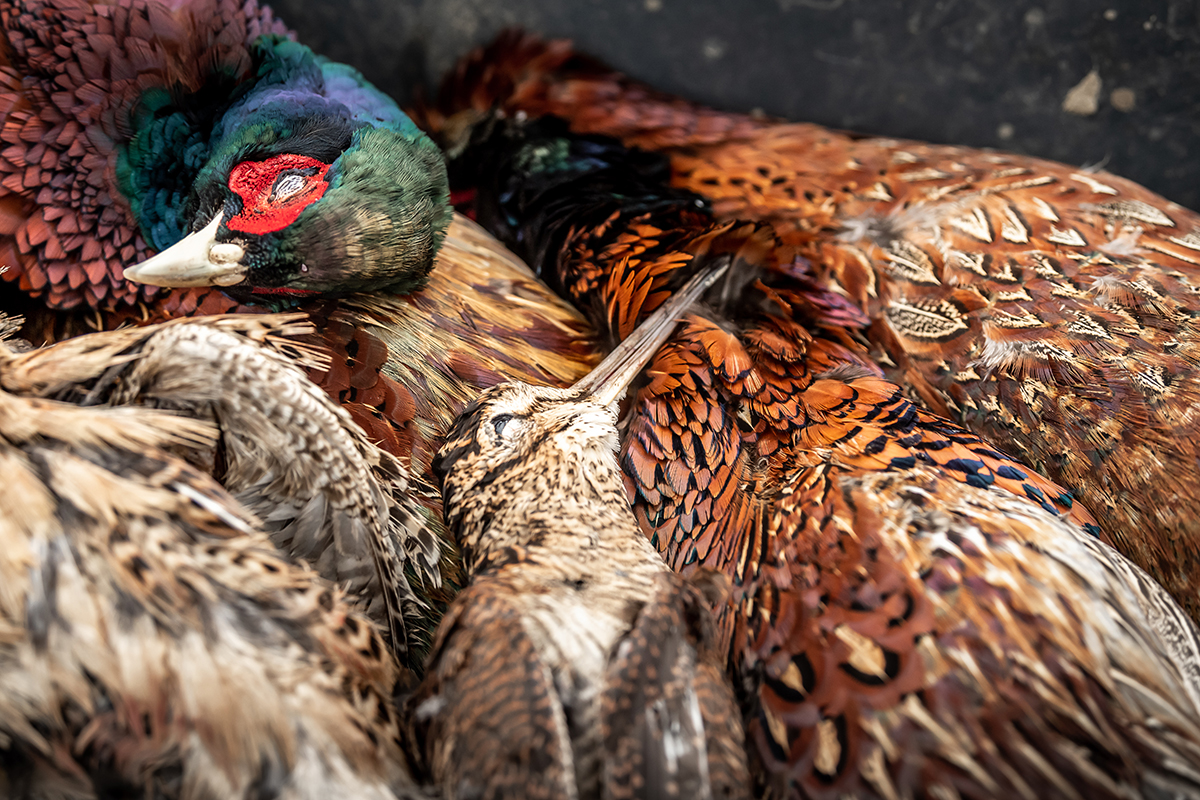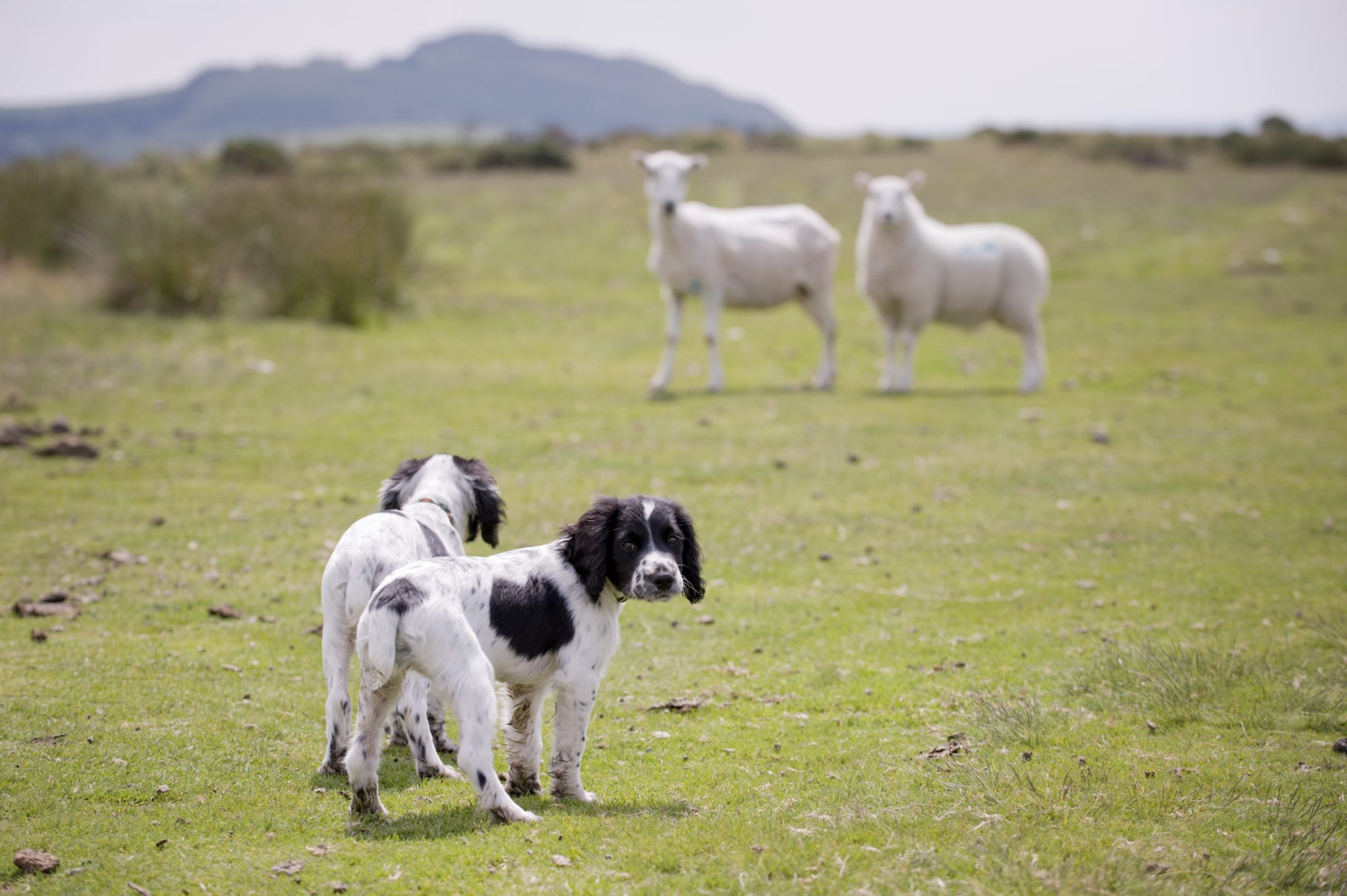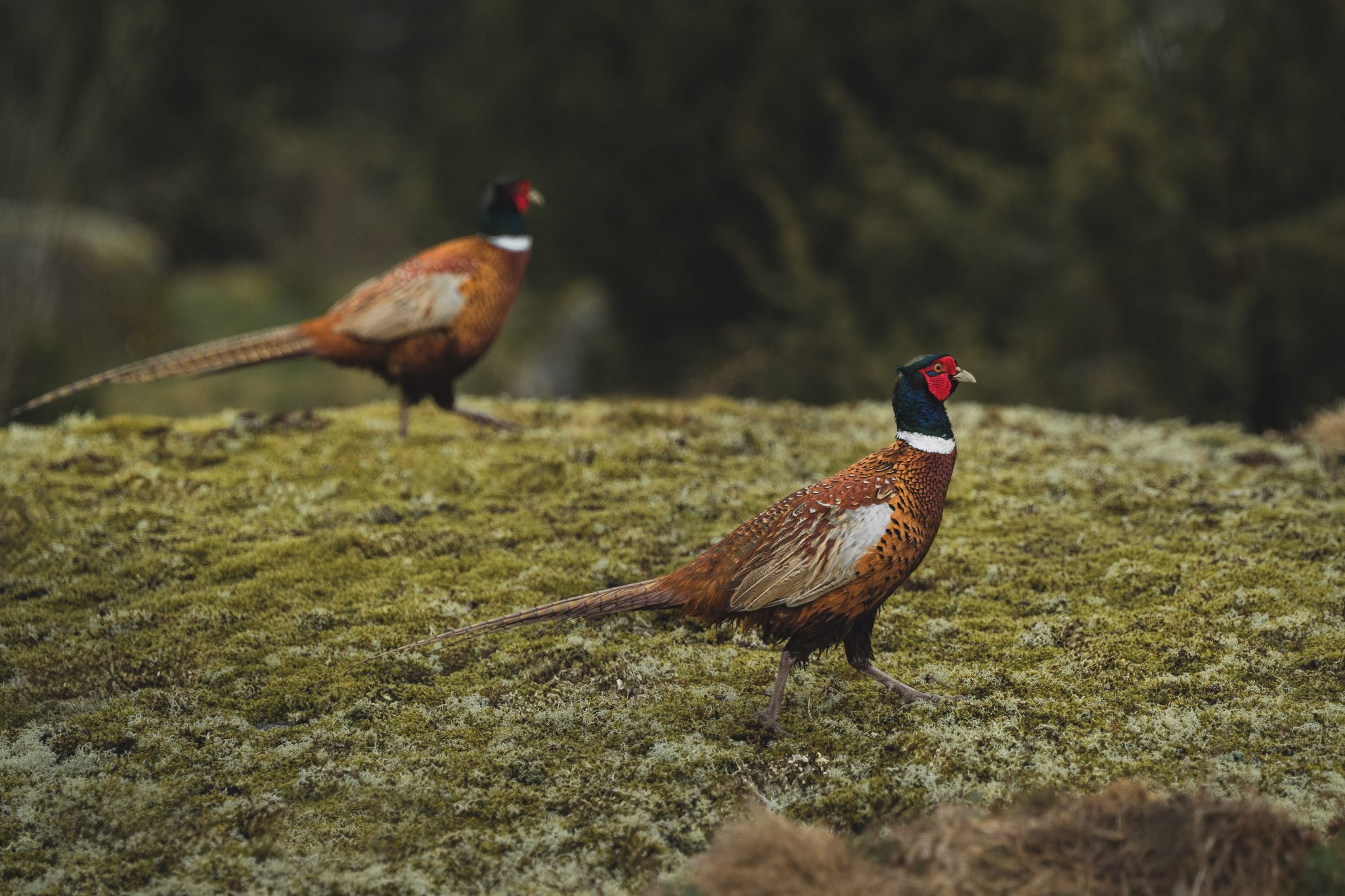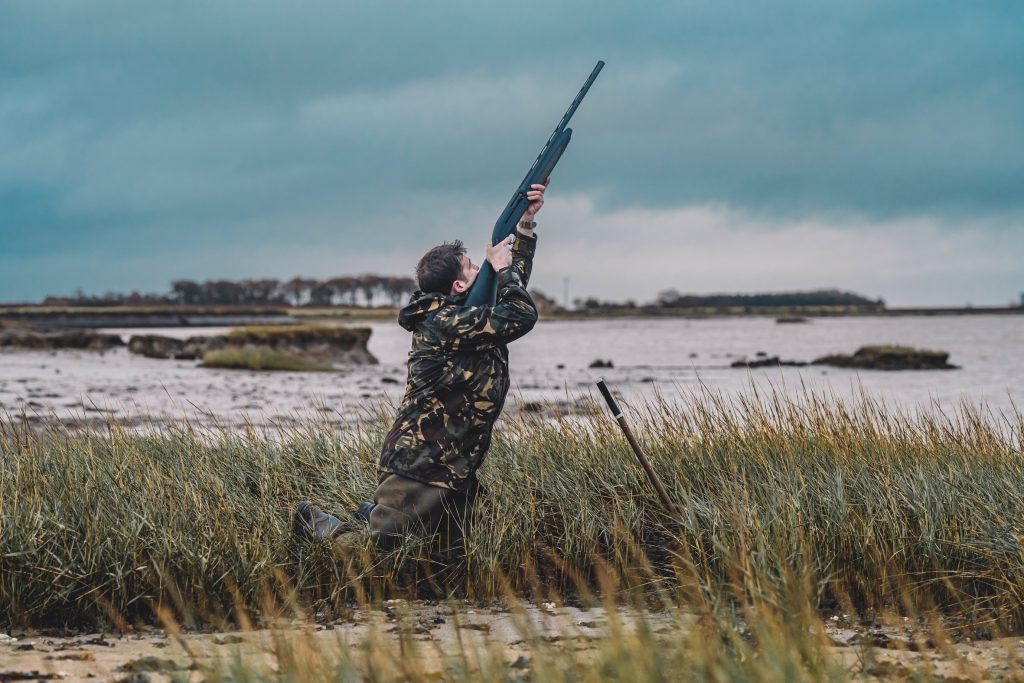Win CENS ProFlex DX5 earplugs worth £1,149 – enter here
Steel shot vs lead shot – the hard facts about steel shot
 Game birds
Game birds
Debate centred around steel shot vs lead shot is nothing new. When chatting with chums at the clay shooting club, or browsing internet shooting forums, it becomes clear that the current move away from lead shot for live quarry shooting is a hotly discussed topic.
Somewhat surprising, given that we are now two years down the road since nine major shooting organisations released their joint statement, is the number of comments revealing little understanding of the reasoning behind it. The joint statement called upon every individual and business involved with live quarry shooting to transition away from the use of lead shot (and single use plastics) within five years.
Sporting Gun readers will know why the nine associations took the decision to call for a voluntary phasing out of lead for live quarry shooting, being members and the topic covered here previously. It was a pre-emptive measure to allow a five-year window which would, hopefully, avoid an enforced ban being imposed earlier.
The risk of such a ban had increased with moves within Europe to ban the sale of meat containing lead into the food chain, under the auspices of the European Chemicals Agency (ECHA) and REACH with the express intention of minimising exposure to lead from food products.
As the UK must abide by the rules of markets they wish to remain involved with we cannot override such rules. Indeed there is now a UK REACH as a department of the wider HSE (www.hse.gov.uk/reach) to ensure UK manufacturers and suppliers comply with rules in all appropriate markets.
Lead shot vs steel shot – the shooter’s perspective
This is why some major UK game buyers and dealers, with much of their market being in Europe, have announced an end to them purchasing lead shot game from the 2022 season onward.
Some shooters will, and have, criticised the associations for “selling us down the river”. However, given that these restrictions were long known about as ‘in the pipeline’ (I was at a meeting of the WFSA [World Forum on Shooting Activities] in Nuremberg in 2019 when this was the main topic for discussion) it is clear that any further delay could have caused even more disruption than we are experiencing now.
The more people who engage with the topic and help those yet to grasp the issues we face, explaining what they are when the opportunity arises, less time and energy will be wasted fighting the wrong battle, leaving more resources to tackle the real one.
One example that crops up repeatedly on shooting internet and Facebook forums is: “my father has been drinking water supplied through lead pipes most of his life and suffered no harm”, and “I and my family have been eating lead shot game for years with no ill-effects”: both these and similar remarks are followed up with “so why ban lead as no harm is proven. We should fight this”.
That is all well and good but the ban affecting sales is in Europe, not here. The European shooting organisations have not succeeded in preventing this from happening despite the battle appearing there long ago.
It is not about whether eating lead shot game is harmful but that it has been deemed wrong to sell food containing more than minimum traces of lead. UK supermarkets have already stated their intention not to sell game containing lead shot too; it is clearly a battle that is already all but lost.
Lead shot vs steel shot – issues arising
Any change and disruption to a long established industry will be difficult.
When two of the key components upon which your product depends both alter at short notice it is amazing that so much progress has been made; especially when compounded by Covid restrictions. It is hard to ‘work from home’ when commercially loading cartridges.
Replacing the primary projectile material upon which the whole development of shotguns for sporting use has depended for so long, and in a five-year time scale, is an immense task.
That all areas of shotgun use and shooting scenarios can be addressed by using the non-toxic shot options remains impossible to fully quantify.
This raises regular questions for many whose guns, calibres and preferred type of shooting are less readily addressed by a transition to steel shot, which is considered the main type of shot going forward.
Making life even more difficult for cartridge companies to cope with the transition period is the inclusion of replacing oil-based plastics with bio polymer in the production of wads within the same, short, time frame as replacing lead shot with non-toxic alternatives.
This has created an incredibly difficult task for cartridge makers to meet. The same technicalities which cause concerns for shooters crop up time and again. .
Some of the typical queries concerning guns and wads will be considered below; there will be many more that we cannot possibly fit into just one article.
Which shot size?
The generally accepted steel shot size is to use two sizes up to that you would choose with lead shot. This has caused confusion as this means that if you prefer No 5 shot lead then you would choose No 3 in steel.
The problem is that the material published has often stated that No 4 shot, being 3.1mm diameter, was therefore the largest size that could be used in steel shot cartridges.
However, 3.1 mm diameter is smaller than the CIP maximum size for Standard Steel cartridges limit of 3.25 mm Ø and so loses some of the potential shot size advantage. UK No 3 shot is 3.3 mm Ø and so falls very marginally outside the CIP limit.
This has been addressed by some makers keen to offer maximum pellet size in Standard Steel cartridges by giving steel pellets of 3.25mm Ø a name that identifies it as being a ‘steel shot size’. Hull Cartridge Company does this by calling their Imperial Traditional Steel and High Pheasant Steel cartridges as shot size Fe4 (3.25mm); Jocker does similar with their Bio ISO Steel, with the designation 4A, which is also 3.25mm. Other makers may take a different approach but, the key point to note is the metric size of 3.25mm Ø for 12 gauge Standard Steel cartridges.
If you have any steel shot, 12 gauge cartridges with shot size larger than 3.25mm Ø they are classed as High Performance steel, where the CIP shot size limit rises to 4 mm Ø (and velocity can be 430 mps@ 2.5 metres from the muzzle, 5 metres higher than Standard Steel). Momentum can also rise to 13.5 Newton/ seconds, 1.5 higher than Standard Steel which allows for a greater shot load weight at that velocity.
Can my gun take steel shot?
Check your gun for the fleur-de-lys markings before using steel
The most common query remains: “Can I use steel shot in my gun?” The answer, so far as typical 12-bore game guns are concerned, is straightforward. If your gun carries the steel proof tested fleur-de-lys proof mark it is suited for use with High Performance as well as Standard Steel cartridges.
Note that stating ‘Standard Steel’ on the cartridge cartons is not a CIP requirement (although some makers do so) but High Performance cartridges MUST state that clearly on the packaging. So, if you have some steel shot cartridges that do not state Standard or High performance then they are Standard steel.
Which choke can I use?
For High Performance cartridges (in steel proof guns, obviously) with the CIP recommendation being Half choke maximum. We know that many steel shot users in America use up to full choke and there are specialist after-market choke makers that offer full choke tubes for steel shot cartridges. The UK, being part of the CIP has to follow CIP rules and so reflect those recommended by CIP.
However, UK Proof Authorities are permitted to recommend lower degrees of choke be used, where appropriate. They do this with regard to the lightweight English style game guns where ¼ choke is the recommended maximum choke for this style of gun proofed only for nitro but not steel shot, and proofed post 1954.
The reasoning is simply that these lightweight guns usually have thinner barrel walls than full weight guns and this makes them more prone to momentum damage, such as ring bulging where the shot reaches a constriction. The incompressibility of steel, combined with greater outward vector pressure on the bores due to the very hard round shot, has been shown to damage some such guns with more than ¼ choke.
The CIP states full choke as the maximum for use with Standard Steel cartridges, but that is for guns with heavier, thicker barrel walls and not thin barrel wall lightweight guns. This is where advice could be sought from a competent gunsmith who can measure barrel wall thickness and offer guidance as to suitability with steel shot.
However, do not expect a gunsmith to guarantee that a barrel or choke will definitely withstand steel cartridges; it is just not that easy to ascertain.
Older guns may have unseen weaknesses between their barrels, which steel could reveal. This is another reason the Proof Authorities limit their recommendations to post 1954 proof-marked guns.
If submitting for reproof, even to standard proof, it may be advisable to lengthen very short forcing cones on some older guns with very short, steep, cones a modest amount with a slight taper.
Chokes might be similarly treated if short and steep; very tight chokes might be best opened up a little at the same time.
Work is ongoing on these topics as well as studying the performance, strengths and weaknesses, of emerging biodegradable wads. Some interesting and very valuable information has been collated in Denmark where steel shot has been in use for game shooting for over 10 years.
Gunsmiths and shooters there have obviously gained knowledge through experience along the way.
I was interested to receive mention of a potential issue with some wad types where the shot cup petals are moulded in and wider than the norm with steel shot wads. Some biopolymers do not mould so readily as HDPE plastics and can result in a wider gap between shot cup petals than HDPE wads.
This is a complex issue and, to present it fully would require more research and, probably, an article of its own.
Lead shot vs steel shot – point of caution for shooters
I feel I must raise a point of caution for shooters to note because I have received mention from Denmark of a potential issue that may affect some guns and cartridges and which I raised as a possibility back in 2019. It concerns those wads where the gaps between petals are sufficiently wide that the steel pellets in the load can be easily seen when cutting the case to reveal the gaps in a loaded cartridge.
With the pellets already having access to the gap, the powerful vector forces that were detailed in an earlier SG article, can force the pellets through the gap such that they touch the barrel bore wall.
One contact in Denmark has confirmed that this issue has now actually arisen there. As I had also mentioned in a 2019 article, the issue is exacerbated with guns having much extended forcing cones usually accompanied by larger ‘over- bored’ barrel bores.
Until more research is completed it would be prudent for those who own such guns to be aware of this potential and perhaps choose to use steel shot cartridges where the shot cups have very small gaps between the petals and, preferably, as minimal as HDPE steel shot wad cups are. NB: most HDPE steel shot wads, even though this material can be moulded into very fine shapes, mostly have their shot cup petals knife cut. This is often done as part of the loading sequence for exactly the reason that although petals are desirable GAPS ARE NOT – particularly with steel shot.
Some biopolymers used for wads are more difficult to mould quite so precisely as HDPE; some are much softer too. Being soft can make them more difficult to cut slits to form petals and presumably significant in using the moulded petals.
The best advice at this time is to be aware of which wads are in the cartridges you purchase and especially such that, if your gun is other than standard, shorter forcing cones, and standard bore size, to exercise caution. There will be much more to learn about this topic in future I am sure.
That something flagged as a potential issue, over two years ago, is now reported as having happened is another reason why the inclusion of a move away from oil-based plastics at the same time as moving away from lead shot is, in fact, a much more difficult task than appears to have been recognised by those calling for it.
Referencing this early remark, made in the recent Moving Away from Lead booklet: “For the first time, biodegradable shot cups for steel shot, with the necessary ballistics to ensure lethality, are available.” At the time the joint statement of intent was made, work on such wads and materials was in its infancy. It is still very much a work in progress. As with most new developments, when new products are urgently required to fulfil new roles under new conditions, some missteps are all but inevitable. We have seen examples already and it is conceivable more will yet arise.
‘Proceed with caution’ is something shooters, cartridge companies – and shooting associations – should pay close heed to. The potential for problems involving risk and potential harm – hopefully confined to guns only – evidently exists. With timescales on one hand, product development and potential pitfalls on the other, this is, indeed, probably the most difficult time most cartridge companies have ever faced.
Small gauges
The number of queries regarding smaller bores than 12 and 20 – the two best catered for at present – arises surprisingly often too. Though a smaller proportion in their numbers cannot be dismissed.
Cartridge makers are having to find solutions for their biggest markets to survive and so, unfortunately, smaller gauges will lag behind, as will the well respected 16-bore. Owners of 16, 28 and 0.410 guns will likely have to wait a while for more options.
Steel shot with its lighter weight and volume requirements clearly poses even greater challenges for all smaller gauges with some, quite possibly, becoming considerably restricted with steel shot.
Options could then include the much more expensive Bismuth shot option or, the astronomically expensive (but incredibly effective) Tungsten Super Shot (TSS). Plenty of hand loaders are currently experimenting with TSS but commercial loads are likely to be some way off yet.
BASC’s latest booklet
BASC has encouraged the move to steel
A good deal of useful information is contained within the BASC booklet Moving Away from Lead Shot recently sent to members. However, some of the information supplied is, in my view, not beyond critical comment. For example the reference to wildfowlers ‘using non-toxic shot for over 20 years’ is not comparing like with like.
Wildfowlers have been able to use HDPE oil based plastics for their wads, a material which has proven itself ideal for this purpose; most still are. HDPE is extremely strong, readily moulds to very precise dimensions and performs from below freezing to high temperatures produced by propellant powders: it is also available in various grades, in large commercial quantities and at very competitive prices.
Unfortunately there are currently few (if any) biodegradable polymers able to replicate all HDPE’s properties. I am in touch with specialists in this sphere so that aspects can be discussed more fully in the future.
However, as we have already seen, the path to replacing HDPE wads with biopolymers is complex and in a short time frame is also fraught with risk.
Note that at least two ‘bio’ wads that have reached the market since the proposed transition have, unfortunately, already exhibited failures.
I won’t name brands here, but plenty has been said and photographs shown on internet forums. One tended to crack in the gas seal but remain reasonably viable; the other failed completely – leaving wads stuck up barrels and in chokes.
It would appear that, very fortunately, no one suffered anything too major as a result. However, given the relatively small number of wads having so far reached the market, two failures represents an exceptionally high failure rate.
This must be an added concern for cartridge loaders as they tussle with materials and designs that will fulfil their loading needs while also being able to be precision moulded and cope with the pressures, temperatures and climatic conditions that cartridges must cope with.
Trying to meet these demands in an artificially short time frame, especially imposed by those not directly involved in the intricacies of wad making and cartridge loading is, in my view, creating the conditions for more failures to arise: I do hope I am proved wrong.
Wildfowlers also tend to use heavier and often very robust and less expensive guns than game shooters do; along with longer chambers for heavier charges which increase their ammunition options.
Related Articles
Get the latest news delivered direct to your door
Subscribe to Shooting Times & Country
Discover the ultimate companion for field sports enthusiasts with Shooting Times & Country Magazine, the UK’s leading weekly publication that has been at the forefront of shooting culture since 1882. Subscribers gain access to expert tips, comprehensive gear reviews, seasonal advice and a vibrant community of like-minded shooters.
Save on shop price when you subscribe with weekly issues featuring in-depth articles on gundog training, exclusive member offers and access to the digital back issue library. A Shooting Times & Country subscription is more than a magazine, don’t just read about the countryside; immerse yourself in its most authoritative and engaging publication.







